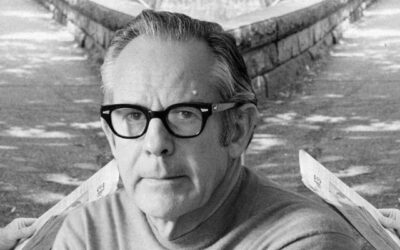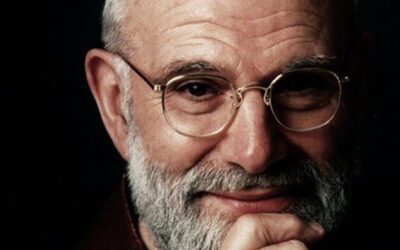Who is Thomas Moore?
Thomas Moore (1940-) is a renowned psychotherapist, former monk, and bestselling author known for his influential writings on the soul and the art of living. His work, blending depth psychology, spirituality, and poetic wisdom, has played a seminal role in the contemporary revival of interest in the soul and its care. In particular, his classic book Care of the Soul (1992) struck a deep chord in the popular imagination and has been credited with sparking a “soul revolution” in the fields of psychology, spirituality, and self-help.
Over his rich career, Moore has articulated a compelling vision of the soul as the vital core of human experience, the seat of our deepest passions, imagination, and meaning. Drawing on the insights of Jung, Hillman, and the world’s mythological and contemplative traditions, he has championed a re-enchantment of everyday life and a return to the cultivation of soulfulness in all our endeavors. At the heart of his message is an invitation to reclaim the poetic depths of existence, to tend to the subtle stirrings of the heart, and to embrace the mysteries and uncertainties of the human journey with creativity, courage, and compassion.
This essay provides an in-depth exploration of Moore’s thought and its significance for the care and understanding of the soul in our time. It elucidates his central ideas regarding the nature of the soul, the art of soulful living, and the spirituality of the imagination. Additionally, it situates his work within the depth psychological tradition and considers his distinct contributions to archetypal and transpersonal psychology. Finally, it offers a retrospective on Moore’s impact and legacy, assessing his role in the contemporary soul movement and his enduring relevance for a world in crisis.
- Official Website: Thomas Moore
- Books: Care of the Soul Amazon
- YouTube Lecture: Thomas Moore on the Soul
- Interview: In Conversation with Thomas Moore
- Podcast: Moore on Soulful Living
- Article: Thomas Moore on Spirituality
- Institute: Thomas Moore at Pacifica
- Research: Publications by Thomas Moore
- Quotes: Thomas Moore Quotes
- Lecture Series: Moore on Soul in the World
Moore’s Background and Training:
Thomas Moore’s approach to psychology and spirituality is deeply informed by his rich and varied background. Born in Detroit in 1940, he studied music, philosophy, and theology at Catholic seminary and university, earning degrees in all three fields. He then spent over a decade as a monk in the Servite order, immersing himself in the study and practice of Christian spirituality.
After leaving the monastery, Moore worked as a psychotherapist, musician, and writer, while continuing to study psychology and world religions. He was particularly influenced by the work of Carl Jung and James Hillman, as well as the mystical and contemplative traditions of Christianity, Buddhism, and Sufism.
This unique blend of experiences and influences is evident throughout Moore’s work. His deep knowledge of religious and mythological systems informs his understanding of the soul’s depths and complexities. At the same time, his therapeutic training and practice ground his insights in the concrete realities of human suffering and transformation. The result is a perspective that is both richly erudite and deeply humane, attuned to the intellectual, emotional, and spiritual dimensions of the human journey.
Main Ideas and Key Themes:
- Moore conceives of the soul as the vital, imaginative core of the person, the source of our deepest values, passions, and creativity. Soul is not a fixed entity but a dynamic, evolving process that requires ongoing attention and care.
- The main task of the individual is the care of the soul, which involves cultivating a poetic and mythic sensibility, attending to the subtle movements of the heart, and honoring the mysteries of existence. Soulful living means embracing complexity, paradox, and the shadow elements of life.
- Moore emphasizes the importance of the arts, dreamwork, and myths as portals to the soul’s depths. By engaging with powerful works of the imagination, we contact archetypal forces that can enrich and transform our lives.
- Spirituality, for Moore, is rooted in the individual’s personal relationship to the sacred as it manifests in the particularities of their experience. He advocates a contemplative, mystical approach that honors the immanence of the divine in the world.
- Influenced by James Hillman’s archetypal psychology, Moore sees the psyche as polytheistic, animated by multiple archaic powers and potentialities. Mental health entails not a unilateral wholeness but a conscious hosting of the diversity of the soul.
- Moore also draws on the transpersonal theory of Ken Wilber, situating the individual soul within an evolutionary spectrum of consciousness. Soulwork, in this context, is part of the larger human journey towards Spirit, the ground and goal of existence.
- While valuing much in modernity, Moore offers a strong critique of its one-sided emphasis on rationality, efficiency, and progress. He calls for a re-enchantment of the world through the cultivation of a poetic, contemplative, and mythically-informed way of life.
- Ultimately, the care of the soul is not just a private matter but a cultural and planetary imperative. By tending to the deep imagination of the anima mundi, the soul of the world, we can help to restore a sense of meaning, connection, and sacred purpose to a civilization in crisis.
Care of the Soul:
Moore’s most well-known and influential work is undoubtedly Care of the Soul, first published in 1992. The book’s remarkable success – spending over a year on the New York Times bestseller list – attests to its resonance with a culture hungry for a richer, more soulful way of life. In lucid and lyrical prose, Moore presented a compelling vision of the soul and its care that spoke to the deep yearnings and frustrations of millions of readers.
At the heart of Care of the Soul is Moore’s conception of the soul as the vital core of human experience, the seat of our deepest feelings, values, and imagination. The soul, he suggests, is not a static entity but a dynamic, evolving process that requires constant attention and nurture. It is the source of our creativity, our passion, our sense of meaning and purpose in life.
Unfortunately, Moore argues, modern Western culture has largely lost touch with the soul and its needs. In our obsession with progress, efficiency, and material success, we have neglected the subtler dimensions of existence and the cultivation of a rich inner life. The result is a pervasive sense of alienation, emptiness, and spiritual hunger – a “loss of soul” that afflicts individuals and society as a whole.
The antidote, according to Moore, is a renewed commitment to the care of the soul in all aspects of life. This involves attending to the deep imagination, the poetic basis of existence, and the stirrings of the heart. It means embracing the mysteries, uncertainties, and shadow elements of the human condition with creativity, courage, and compassion.
Moore emphasizes that soul is not something abstract or ethereal, but is woven into the fabric of everyday life. As such, the work of soul-tending is not separate from but infuses our ordinary activities and relationships. Cooking, gardening, decorating our homes, conversing with friends – all of these can be occasions for soulfulness when approached with mindfulness, artistry, and love.
Central to the care of the soul is the cultivation of a mythic and poetic sensibility. Moore suggests that myth and poetry are the native languages of the soul, giving voice to its depths and complexities. By engaging with powerful works of art, literature, and music, we open ourselves to archetypal forces that can enrich and transform our lives.
Moore also stresses the importance of dreamwork, ritual, and contemplative practice for the care of the soul. Dreams, he argues, offer direct access to the soul’s hidden wisdom and untapped potentials. By attending to their symbolic messages with curiosity and reverence, we can gain valuable guidance and insight. Similarly, rituals and contemplative disciplines like prayer and meditation help to anchor us in the depths of the soul and connect us to the sacred dimensions of life.
Throughout Care of the Soul, Moore emphasizes the importance of honoring the full spectrum of human experience, including the painful, troubling, and shadowy aspects. The soul, he suggests, is not interested in perfection or one-sided happiness, but in wholeness and depth. As such, tending to the soul means learning to befriend our weaknesses, wounds, and darknesses, recognizing them as potential sources of insight and transformation.
Ultimately, the message of Care of the Soul is one of hope and enchantment. By recovering a sense of life’s poetic depths and committing ourselves to the soulful cultivation of everyday experience, Moore suggests, we can restore a sense of meaning, beauty, and sacred purpose to our lives. The care of the soul is thus not just a private matter but a cultural imperative, a summons to re-ensoul a world grown cold and disenchanted.
The impact of Moore’s vision has been far-reaching and profound. Care of the Soul sparked a renaissance of interest in the soul in popular culture and established Moore as a leading voice in the fields of psychology and spirituality. More than just a self-help manual, the book offered a penetrating critique of the modern mindset and a compelling alternative rooted in the wisdom of the ages. Its influence continues to resonate today, inspiring countless readers to embark on their own journeys of soul-discovery and re-enchantment.
Thomas Moore’s Approach to Historical Research:
One of the distinguishing features of Thomas Moore’s work is his unique approach to historical research, particularly in his study of Carl Jung’s life and ideas. Moore’s methodology is characterized by a deep engagement with primary sources, a sensitivity to historical and cultural context, and a commitment to a hermeneutic, interpretive mode of inquiry.
In his writings on Jung, Moore draws extensively on Jung’s own works, including his autobiographical reflections, letters, and scholarly writings. He also delves into the wider intellectual and cultural milieu in which Jung developed his ideas, exploring the influence of figures like Goethe, Nietzsche, and the Romantics on Jung’s thought.
At the same time, Moore’s approach is not simply descriptive or expository. Rather, he seeks to enter into a creative dialogue with Jung’s ideas, to “dream with” the material and to allow it to speak to the concerns and challenges of our own time. In this sense, Moore’s methodology is as much imaginative and poetic as it is scholarly and historical.
Comparison of Psychological Approaches:
In his exploration of Jung’s depth psychology, Moore often contrasts it with other influential approaches, particularly those of Sigmund Freud and Alfred Adler. While acknowledging the important contributions of these thinkers, Moore suggests that Jung’s perspective offers a unique and vital corrective to some of their limitations.
Freudian psychoanalysis, with its emphasis on the repression of sexual and aggressive drives, the resolution of the Oedipus complex, and the ego’s struggle to mediate between the demands of the id and the superego, tends to pathologize the psyche and to see the goal of therapy as the achievement of a fragile, compromised adaptation to reality. For Freud, the unconscious is primarily a repository of rejected, infantile wishes and traumatic memories, and the aim of analysis is to bring these contents into consciousness so that they can be rationally managed and controlled.
Adlerian individual psychology, while diverging from Freud in significant ways, shares some of these basic assumptions. Adler emphasized the importance of social interest and the striving for superiority in shaping personality, and saw neurosis as the result of misguided attempts to compensate for feelings of inferiority. Like Freud, Adler tended to view the psyche in primarily personal and interpersonal terms, and to see the goal of therapy as the achievement of a more adaptive, socially adjusted way of living.
Jung’s depth psychology, in contrast, posits a much more expansive, creative, and spiritually-attuned view of the psyche. For Jung, the unconscious is not just a storehouse of repressed contents but a living, dynamic reality, teeming with symbols, archetypes, and the seeds of future growth and transformation. The goal of Jungian analysis is not just symptom relief or social adaptation but the realization of the Self, the discovery of one’s unique path of individuation.
Central to Jung’s vision is the idea that the psyche is inherently purposive and prospective, oriented toward the unfolding of its own deepest potentials. This teleological view sets Jung apart from Freud and Adler, who tended to see the psyche in more reductive, deterministic terms. For Jung, the psyche is not just shaped by the past but drawn forward by intimations of the future, by the lure of unrealized possibilities and the call of destiny.
Another key difference is Jung’s emphasis on the collective dimensions of the psyche. While Freud and Adler tended to focus on the personal and interpersonal aspects of experience, Jung explored the ways in which the individual psyche is embedded within larger cultural, historical, and archetypal matrices. His concepts of the collective unconscious, archetypes, and the individuation process all reflect this more expansive, transpersonal view.
Moore’s Synthesis: In his own work, Moore draws deeply on Jung’s insights while also integrating them with ideas from other depth psychological traditions, mythology, religion, and the arts. His approach is characterized by a commitment to the imaginative, poetic dimensions of experience, a sensitivity to the numinous and the sacred, and a vision of psychology as a fundamentally spiritual and transformative discipline.
Like Jung, Moore emphasizes the importance of attending to the psyche’s symbolic, archetypal language and of honoring the individuality and mystery of each person’s unique path of soulful unfolding. At the same time, he tempers some of Jung’s more esoteric and metaphysical tendencies with a grounded, embodied, and relational sensibility.
Perhaps most distinctively, Moore brings a strong aesthetic and contemplative dimension to his engagement with depth psychology. For Moore, the cultivation of an artistic, poetic sensibility and the practice of soulful attentiveness and reflection are essential for psychological and spiritual growth. His vision of “care of the soul” is not just a therapeutic technique but a way of life, a mode of being in the world that honors the sacredness and complexity of the human experience in all its dimensions.
In this sense, Moore’s work represents a creative synthesis of Jungian depth psychology with other wisdom traditions, one that seeks to articulate a new vision of psychological healing and growth for our time. By engaging deeply with Jung’s ideas while also reimagining them in light of contemporary challenges and sensibilities, Moore helps to renew the transformative potential of depth psychology and to make its insights accessible and relevant to a wide audience.
At the same time, Moore’s approach is not without its critics or limitations. Some have suggested that his emphasis on the mythic and the imaginative can sometimes veer into a kind of romanticism or escapism, a turning away from the hard realities of the world. Others have questioned whether his vision of soulful living is truly accessible or relevant to those who are marginalized, oppressed, or struggling with more acute forms of psychological distress.
These are important challenges, and ones that any contemporary depth psychology must grapple with. But they do not negate the profound contributions that Moore has made to the field, nor the enduring power of his call to tend to the poetic depths of the soul in a world that has grown increasingly fragmented, disenchanted, and shorn of meaning.
Ultimately, the significance of Moore’s work may lie precisely in its ability to bridge the gap between the timeless insights of the depth psychological tradition and the urgent questions and concerns of our own historical moment. By bringing a poetic, contemplative sensibility to the study of the psyche, and by articulating a vision of psychological growth that is grounded in the cultivation of imagination, beauty, and soulful presence, Moore helps to keep alive the transformative potential of depth psychology and to chart a path toward a more integrated, compassionate, and soulful way of being in the world.
Archetypal and Transpersonal Psychology:
While deeply influenced by classical Jungian thought, Moore’s work also extends and innovates upon it in significant ways. In particular, his writing is informed by the insights of two post-Jungian schools: James Hillman’s archetypal psychology and Ken Wilber’s transpersonal theory. Moore draws upon these frameworks to develop a rich and nuanced understanding of the soul that is at once polytheistic and evolutionary, honoring the diversity of psychic life while situating it within a larger spiritual context.
From Hillman, Moore inherits a vision of the psyche as inherently multiple, animated by a pantheon of archaic powers and potentialities. Hillman rejected the Jungian notion of the Self as a unitary, integrative center, arguing instead for a “polytheistic” model of the soul. In this view, psychic wholeness consists not in the achievement of a static unity but in the conscious embrace of the diversity of the soul’s voices and impulses.
Moore resonates deeply with this perspective, emphasizing the importance of honoring the full spectrum of the soul’s expressions. In books like Care of the Soul and Original Self, he suggests that mental health and vitality require a kind of inner democracy, a willingness to host the various and often conflicting energies that compose the psyche. The goal is not to eliminate or transcend these energies but to cultivate a dynamic, creative balance among them.
At the same time, Moore tempers Hillman’s radical polytheism with a recognition of the integrative and spiritual dimensions of the psyche. Drawing on Wilber’s transpersonal theory, he situates the individual soul within an evolutionary spectrum of consciousness, a “Great Chain of Being” that spans from matter to Spirit. In this view, the ultimate ground and goal of existence is not the plurality of the soul but the unity of the Divine, the “Suchness” that transcends and includes all manifestation.
For Moore, the care of the soul is thus not an end in itself but part of a larger journey of spiritual awakening and cosmic evolution. By tending to the depths of the psyche and honoring its many voices, we create the conditions for a more expansive realization of our essential nature. The soul, in this sense, is a bridge between the human and the divine, a crucible in which the timeless and the temporal meet and merge.
Throughout his work, Moore emphasizes the importance of cultivating a personal, experiential relationship with the sacred. He advocates a contemplative, mystical spirituality that honors the immanence of the divine in the world and in the depths of the soul. This is a spirituality rooted not in dogma or external authority but in the individual’s unique encounter with the mystery of existence.
For Moore, the arts play a vital role in this encounter, serving as portals to the soul’s depths and the archetypal realm. In books like The Soul’s Religion and The Re-Enchantment of Everyday Life, he explores how engagement with poetry, music, painting, and other creative disciplines can awaken us to the mythic dimensions of experience and connect us to the anima mundi, the soul of the world.
Moore’s vision of an ensouled and re-enchanted existence is deeply countercultural, challenging the dominant assumptions of modernity. He critiques the Western obsession with rationality, control, and progress, arguing that it has led to a disastrous neglect of the soul and its needs. In place of this one-sided worldview, he calls for a renaissance of the poetic imagination, a renewed attunement to the mysteries and wonders of the human journey.
Ultimately, for Moore, the care of the soul is not just a matter of individual fulfillment but a cultural and planetary imperative. In a time of global crisis and dysfunction, he suggests, the recovery of soul is essential for the healing of both persons and societies. By tending to the depths of the world soul and nurturing a sense of enchantment and sacred purpose, we can help to lay the foundations for a more just, sustainable, and soul-serving civilization.
Moore and the Christian Contemplative Tradition:
While Moore draws upon a wide range of spiritual and philosophical traditions in his work, he has a particularly deep affinity with the Christian contemplative lineage. Figures like Meister Eckhart, Thomas Merton, and John of the Cross are frequent touchstones in his writings, and he often reinterprets their insights in light of depth psychology and contemporary spiritual concerns.
For example, in Care of the Soul, Moore reflects on Eckhart’s concept of Gelassenheit, or spiritual detachment:
“Gelassenheit is a realization that ultimate meaning is beyond our control and knowledge. We can’t grasp it intellectually or shape it to our liking. Gelassenheit teaches us to let life flow through us, receive it as it presents itself to us, not clutching it too tightly or insisting that it take a particular direction.” (p. 262)
Here, Moore draws upon Eckhart’s mystical theology to articulate a vision of soulful living that is receptive, present-centered, and attuned to life’s mysteries. Throughout his work, Moore engages the Christian contemplative tradition in this creative, syncretic way, mining its depths for wisdom that can speak to the soul’s needs in our time.
Moore and the SBNR Movement:
Moore’s work, especially his later books like A Religion of One’s Own, has been highly influential in the contemporary spiritual but not religious (SBNR) movement. This loose network of seekers, dissatisfied with traditional religious institutions but still hungry for meaning and transcendence, has found in Moore a respected guide and kindred spirit.
Central to Moore’s appeal is his emphasis on the importance of crafting a personalized, idiosyncratic spirituality, one that honors the unique needs and experiences of the individual soul. In A Religion of One’s Own, he writes:
“It is now necessary for each person to develop his or her own religion. I don’t mean a new church or a new sect. I’m talking about a genuinely unique and personal spirituality. In the past, an individual had only two live options: join an already established religion or turn away from religion altogether. Today, there is the possibility of creating a religion of one’s own.” (p. 3)
For the growing numbers of SBNRs, Moore offers a compelling vision of spiritual autonomy and creativity, one that affirms the value of personal experience and the right of individuals to forge their own relationship with the sacred. At the same time, his deep roots in traditional religious and mythological systems provide a sense of grounding and connection to perennial human wisdom. In this way, Moore has helped to legitimize and enrich the SBNR ethos, offering a model of spirituality that is both deeply personal and richly traditional.
Soul and Spirit in Moore’s Thought:
Throughout his work, Moore maintains a subtle but important distinction between soul and spirit. While both are essential dimensions of human experience, they have different qualities and needs. For Moore, soul is associated with the realm of particularity, complexity, and earthiness, while spirit is associated with universality, simplicity, and transcendence.
In Care of the Soul, Moore elaborates on this distinction:
“Soul is more everyday and close at hand. Spirit, on the other hand, suggests the eternal, the immaterial, the universal. Soul is more intimate, more personal. Spirit seems lofty and heavenly. Soul often refers to the troubled parts of life, while spirit is detached and transcendent.” (p. 232)
This differentiation between soul and spirit sets Moore apart from some other thinkers in the depth and transpersonal psychology traditions. For example, James Hillman, the founder of archetypal psychology, tended to collapse spirit into soul, seeing both as expressions of the psyche’s inherent multiplicity. Ken Wilber, on the other hand, situates soul within an evolutionary spectrum of consciousness that culminates in pure spirit or non-dual awareness.
Moore’s view, while indebted to both Hillman and Wilber, charts a middle path. He honors the unique qualities and needs of the soul, seeing it as the vital, imaginative core of human experience. At the same time, he recognizes the reality of spirit as a transcendent dimension that both grounds and exceeds the particularities of the soul. For Moore, both soul and spirit are essential for a balanced, integrated spiritual life.
Re-Enchantment and Critique:
While Moore’s work has been widely celebrated for its wisdom, lyricism, and visionary power, it has also drawn some criticism and sparked debate within the fields of psychology and spirituality. One common critique is that his writing, in its celebration of soul and imagination, tends to downplay the importance of reason, science, and social activism. Some commentators have suggested that Moore’s emphasis on poetic reverie and contemplative practice can promote a kind of escapism or quietism, a withdrawal from the pressing challenges of the world.
Related to this, others have questioned whether Moore’s vision of re-enchantment is accessible or relevant to those who are oppressed, marginalized, or struggling with basic survival needs. They argue that the cultivation of soulfulness, while valuable, is not sufficient in itself to address the systemic injustices and inequities that beset the modern world. From this perspective, a truly transformative spirituality must be wedded to a robust social and political engagement.
Another line of critique suggests that Moore’s work, in its embrace of multiplicity and mystery, can sometimes veer into a kind of relativism or aesthetic individualism. By celebrating the soul’s endless complexities and contradictions, some argue, Moore risks undermining the ethical and epistemic foundations necessary for shared meaning and effective action in the world. A radical polytheism, taken to its extreme, can lead to a fragmentation of values and a loss of common ground.
Finally, some commentators have challenged the historical and cultural accuracy of Moore’s portrayal of the Western spiritual tradition. They argue that his critique of modern disenchantment and call for a recovery of soul is based on a romanticized view of the premodern world, one that ignores the shadows and limitations of past eras. A more nuanced and contextual approach, they suggest, is needed to avoid a simplistic dichotomy between a soulful past and a soulless present.
While important to consider, these critiques do not negate the profound contributions that Moore has made to the understanding and care of the soul in our time. His work, at its best, offers a compelling vision of human flourishing that integrates the poetic and the practical, the personal and the political, the psychological and the spiritual. By inviting us to tend to the depths of the soul with attentiveness, creativity, and compassion, Moore helps to restore a sense of meaning, beauty, and sacred purpose to a world that has grown increasingly fragmented and disenchanted.
Moreover, Moore’s emphasis on the importance of the arts, mythology, and contemplative practice for soulful living remains a vital corrective to the modern privileging of discursive reason and instrumental action. In a culture that often reduces the human experience to a series of problems to be solved or goals to be achieved, Moore reminds us of the irreducible mystery and complexity of the soul, the need to honor its many voices and dimensions.
At the same time, Moore’s work is not a call for a naive or sentimental return to some idealized past, but rather an invitation to reengage the wisdom traditions of the world in a critical and creative way. His vision of re-enchantment is not a matter of escaping the modern world but of transforming it from within, of infusing our lives and institutions with a sense of soulfulness and sacred purpose.
Ultimately, the significance of Moore’s work lies not just in his ideas but in his example, in the way he embodies the art of soulful living. Through his writings, teachings, and presence, he invites us to a life of depth, meaning, and sacred beauty, a life that is attuned to the subtle stirrings of the heart and the whispers of the world soul. As we navigate the uncertainties and opportunities of the future, may we be guided by this invitation and the wisdom it contains. May we learn to care for our souls with the attentiveness, creativity, and reverence that they deserve, and in so doing, help to restore a sense of enchantment and sacred purpose to our world.
Moore’s Legacy and Impact:
Since the publication of Care of the Soul in 1992, Moore’s influence has extended far beyond the fields of psychology and spirituality. His ideas about the soul and the art of living have been taken up and applied in a wide range of contexts, from the arts and education to healthcare and business.
In the arts, Moore’s emphasis on the importance of creativity, imagination, and depth has resonated with countless writers, artists, and musicians. His books are often cited as sources of inspiration and guidance for those seeking to tap into the wellsprings of the creative process and to infuse their work with soul and meaning.
In education, Moore’s vision of soulful learning has been influential in the development of holistic, integrative pedagogies that honor the whole person. His ideas about the importance of mythopoetic language, contemplative practice, and the cultivation of wonder have been taken up by educators seeking to create more engaging, transformative learning experiences.
In healthcare, Moore’s work has been at the forefront of the movement to humanize and personalize medicine. His book Care of the Soul in Medicine argues for a more holistic, compassionate approach to healing that attends to the emotional, spiritual, and relational needs of patients and their families. Moore’s insights have helped to inspire a new generation of healthcare professionals committed to the art of caring presence and the power of narrative medicine.
Finally, in the business world, Moore’s ideas about the soul of work and the importance of meaning and purpose in organizational life have been influential in the development of more soulful, values-driven approaches to leadership and management. His emphasis on the human dimension of work, the need for creativity and imagination in the workplace, and the importance of aligning one’s livelihood with one’s deepest values and callings has struck a chord with many seeking to infuse their professional lives with greater depth and significance.
Read More Depth Psychology Articles:
Taproot Therapy Collective Podcast
Jungian Innovators
Thomas Moore Bibliography:
Books:
1. Care of the Soul: A Guide for Cultivating Depth and Sacredness in Everyday Life (1992)
2. Soul Mates: Honoring the Mysteries of Love and Relationship (1994)
3. The Re-Enchantment of Everyday Life (1996)
4. The Soul of Sex: Cultivating Life as an Act of Love (1998)
5. Dark Nights of the Soul: A Guide to Finding Your Way Through Life’s Ordeals (2004)
6. A Life at Work: The Joy of Discovering What You Were Born to Do (2008)
7. Writing in the Sand: Jesus and the Soul of the Gospels (2009)
8. Care of the Soul in Medicine: Healing Guidance for Patients, Families, and the People Who Care for Them (2010)
9. The Guru of Golf: And Other Stories About the Game of Life (2010)
10. A Religion of One’s Own: A Guide to Creating a Personal Spirituality in a Secular World (2014)
11. Ageless Soul: The Lifelong Journey Toward Meaning and Joy (2017)
12. Soul Therapy: The Art and Craft of Caring Conversations (2021)
Articles and Chapters:
1. “The Theology of Romantic Love” in The Soul of Sex (1998)
2. “The Spirituality of the Gospels” in Writing in the Sand (2009)
3. “Care of the Soul in Medicine” in Care of the Soul in Medicine (2010)
4. “The Soul of Golf” in The Guru of Golf (2010)
5. “Creating a Religion of One’s Own” in A Religion of One’s Own (2014)
6. “Aging with Soul” in Ageless Soul (2017)
7. “The Art of Caring Conversations” in Soul Therapy (2021)
8. “The Poetics of Everyday Life” in The Re-Enchantment of Everyday Life (1996)
9. “Honoring the Mystery in Relationships” in Soul Mates (1994)
10. “Navigating the Dark Night of the Soul” in Dark Nights of the Soul (2004)
Thomas Moore Life Timeline:
1940: Born in Detroit, Michigan
1950s-1960s: Studied at Catholic seminary and university, earned degrees in music, philosophy, and theology
1970s-1980s: Worked as a psychotherapist, musician, and writer; studied psychology and spirituality
1992: Published Care of the Soul, which became a bestseller and established him as a leading voice in the field of soul-centered psychology and spirituality
1990s-2000s: Published several influential books, including Soul Mates (1994), The Re-Enchantment of Everyday Life (1996), and Dark Nights of the Soul (2004)
2010s-2020s: Continued to publish widely, including Care of the Soul in Medicine (2010), A Religion of One’s Own (2014), and Ageless Soul (2017); remains active as a writer, speaker, and consultant on matters of psychology, spirituality, and the art of living
References:
1. Moore, T. (1992). Care of the Soul: A Guide for Cultivating Depth and Sacredness in Everyday Life. HarperCollins.
2. Moore, T. (1994). Soul Mates: Honoring the Mysteries of Love and Relationship. HarperCollins.
3. Moore, T. (1996). The Re-Enchantment of Everyday Life. HarperCollins.
4. Moore, T. (1998). The Soul of Sex: Cultivating Life as an Act of Love. HarperCollins.
5. Moore, T. (2004). Dark Nights of the Soul: A Guide to Finding Your Way Through Life’s Ordeals. Gotham Books.
6. Moore, T. (2008). A Life at Work: The Joy of Discovering What You Were Born to Do. Broadway Books.
7. Moore, T. (2009). Writing in the Sand: Jesus and the Soul of the Gospels. Hay House.
8. Moore, T. (2010). Care of the Soul in Medicine: Healing Guidance for Patients, Families, and the People Who Care for Them. Hay House.
9. Moore, T. (2010). The Guru of Golf: And Other Stories About the Game of Life. Hay House.
10. Moore, T. (2014). A Religion of One’s Own: A Guide to Creating a Personal Spirituality in a Secular World. Gotham Books.
11. Moore, T. (2017). Ageless Soul: The Lifelong Journey Toward Meaning and Joy. St. Martin’s Press.
12. Moore, T. (2021). Soul Therapy: The Art and Craft of Caring Conversations. HarperOne.
13. Hillman, J. (1975). Re-Visioning Psychology. Harper & Row.
14. Wilber, K. (2000). Integral Psychology: Consciousness, Spirit, Psychology, Therapy. Shambhala Publications.
15. Jung, C. G. (1968). The Archetypes and the Collective Unconscious (2nd ed.). Princeton University Press.



























0 Comments